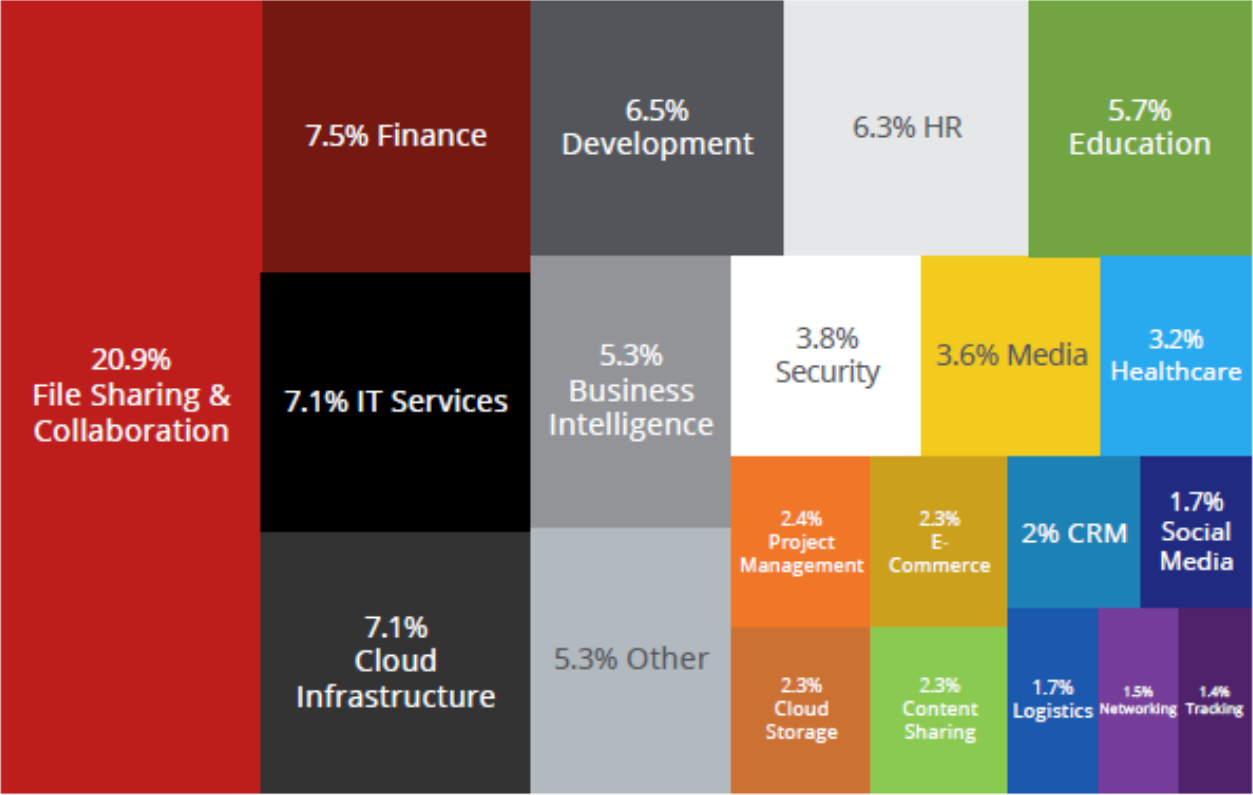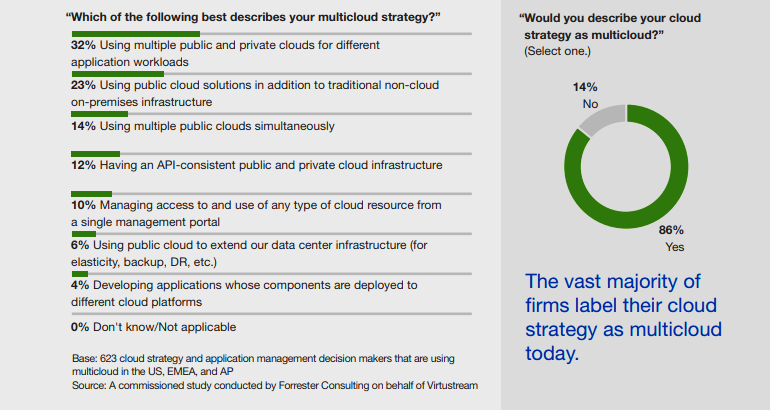
The business drivers
As cloud adoption increased over the years, the following reasons to move the cloud became clearer and easier to understand.
- Focus on accelerating innovation. Instead of spending years on large programs to move the whole company to the cloud, deploy solutions quickly and change frequently.
- Learn from others who deployed the same business area. Do not reinvent the wheel and follow best practice.
- Customer comes first. Do not invest where there is no business advantage. Focus on competitive advantage customer benefit.
- Location Independent. Cloud applications can be used everywhere. It enables you to follow better your business instead business adapting to IT.
- Cost Control. With clear SLA’s with your cloud vendors, segregation of duties and KPI’s in place, cost become more transparent and enables you to growth with your business.
- Cloud adoption is a prerequisite to the digital transformation. If you go digital, you need to build the foundation of an integrated cloud environment.
The lessons learnt (2000 – 2020)
Companies who started with their cloud journey 20 years ago made the following experiences:
- To move from a best of breed approach to cloud suites.
- To start with SaaS cloud application and enhance with PaaS and IaaS application to achieve a full cloud environment.
- To change from cost related management to an innovation engine. (Although we see a current focus on cost savings as an impact from the post pandemic actions, the shift will come back to innovation in the long run).
- From a cloud too to a cloud first approach. Nowadays, it is from a cloud first to a cloud best approach.
- From an IT driven to a business driven mindset.
First and second cloud waves
Every company has a different architecture model. However, the things they have in common are
- Applications in the back office, such as an IT infrastructure, platforms, ICT systems, ERP systems (finance, administration, manufacturing, logistics, supply chain, procurement and human resources).
- Multi-channel customer front end applications such as marketing, sales, services and reporting.
- Core applications, which are unique for every company managing their main businesses such as manufacturing, sales, marketing and services related to the products and services the company is producing and interrelated with their ERP and CRM systems.
The first two areas can be managed by standard applications such as SAP, Oracle, Infor, Workday and Salesforce. The third area are mostly covered by best of breed or custom made and branch / vertical specific solutions.
The architectural components of a cloud provider model as shown in the following diagram contains the various cloud services and how they relate to each other based on the three constituents: cloud consumers, cloud service providers, and cloud brokers.

Since most companies are using a hybrid or multi cloud approach, they use legacy, in house applications and data on their premises and have additional cloud based data and applications deployed in the cloud. Companies therefore should understand and optimize the different types of cloud based IT systems.
An example where to put cloud first could look as followed.
- Platform as a Service (PaaS).
- Service Execution. Allow worldwide subsidiaries and affiliates to work independently from where they are based.
- Multi-channel customer front end applications such as marketing, sales, services, and reporting to enable customer collaboration.
This approach is in line with the initial cloud initiatives. Most companies started with SaaS and moved to PaaS as the next step to move to the cloud. Moving core applications such as services to the cloud follows the business driven approach, where you move applications used daily by subsidiaries and affiliates to a common cloud application. The last but no least area relates to customer collaboration which follows not only a cloud first but customer first approach.
The next wave looks at applications which are considered to move to the cloud. An example to consider cloud could look as followed.
- Infrastructure as a Service (IaaS)
- ERP systems such as Finance, Administration, Logistics, Procurement and Human Resources.
- Sales Management.
Where to consider cloud is dependent on where the company has additional business benefit and customer intimacy after the first wave.
Considerations for the next wave
Most companies are using cloud in some forms today and the most popular ones are a combination of on premises and public cloud solutions. Multi cloud and hybrid cloud models are in the majority.
So what are the cloud services used today?

Source: McAfee
With the increase of remote work, cloud adoption, Artificial Intelligence (AI), Machine Learning (ML) and analytics became a higher priority but not a top priority. Companies recognize digitalization and business related outcome as their top priorities. The shift to digital has reached a stage where more companies are already operating in a digital environment and fewer companies are making plans for a digital environment.
Companies who moved their applications and IT infrastructure to the cloud in staged waves have following learnings and conclusions in common. Ask yourself where are you in your cloud adoption and transition?
- Translating the IT strategy by finding the best balance between on premises and cloud solutions. This is different for every company and situation.
- Make the cloud clearer and easier to understand. People became much smarter about the cloud and take advantage of their cloud expertise.
- Cloud is not only about cost savings, it is about an innovation engine.
- Constantly change and innovate. Approach in staged waves, i.e. cloud first wave, consider now a cloud best approach instead of cloud first.
- Adjust your IT translation – stay flexible and agile. Fail fast – learn fast.
- Pay attention to integration instead perfection.
- Put an overall IT governance in place. How you control information and data are usually the root cause of failures in cloud transformation projects.
- Avoid single business units and subsidiaries to sign up for cloud services independently as integration efforts into existing systems, data exchange and security risks are underestimated.
- Avoid cloud silos, think about cloud suites first.
- Reduce your vendors and select a few trusted key cloud vendors.
- Vendors are growing in influence since they can now bridge the cloud with digital transformation programs.
- Expand the set of use cases for the next generation cloud using analytics, AI, edge computing and cloud usage patterns.
- Focus on vendors that can deliver transformative outcomes.
- Establish good vendor relationships to avoid vendor locks. Ensure your vendor provides enough information about what is being changed and upgraded.
- Put a vendor communication control framework in place. For example, if you use multi cloud, set up uniform reporting with common definitions to avoid different notifications and alerts for the same problem but coming from different vendors.
- Build a good architecture and Dev Ops Team who understand and challenge the vendor’s ecosystem.
- Your cloud vendor provider is not only a service provider, your vendor runs your business. Does your vendor take the same caution with your data as closely and carefully as you as the data owner? Challenge them.
- Use standards from ISO, ITIL and the open source communities to have a common baseline with your IT, business and vendors.
- Include input from the compliance experts to reduce time for audits.
- Focus on a win-win approach since less vendors mean bigger lump risks.
These considerations are based on the first and second cloud wave and should help you to move forward during your next cloud journey. More companies are using cloud services for business critical functions.
Companies considering the next cloud wave want to eliminate the complexity of orchestrating end-to-end integration flows. Using different enterprise systems, whether cloud and API based ERP, CRM, HR and other systems on premises, in the public or private cloud – companies need to ensure their systems are integrated with customers (B2C), market places (B2B) and suppliers (P2P).
Since the multi cloud model is the most popular one, companies will move to cloud applications built from containers, use of micro services and multi cloud orchestration tools. This will enable companies to manage their workloads in the cloud and stay flexible for deployment in their private and public clouds from different cloud service providers to achieve better performance, cost control and other KPI’s.
In future, companies will use the cloud to enhance their digital business with Internet of Things (IoT), Quantum Computing, Artificial Intelligence (AI), Machine Learning (ML), Big Data, Augmented Reality and API’s.






